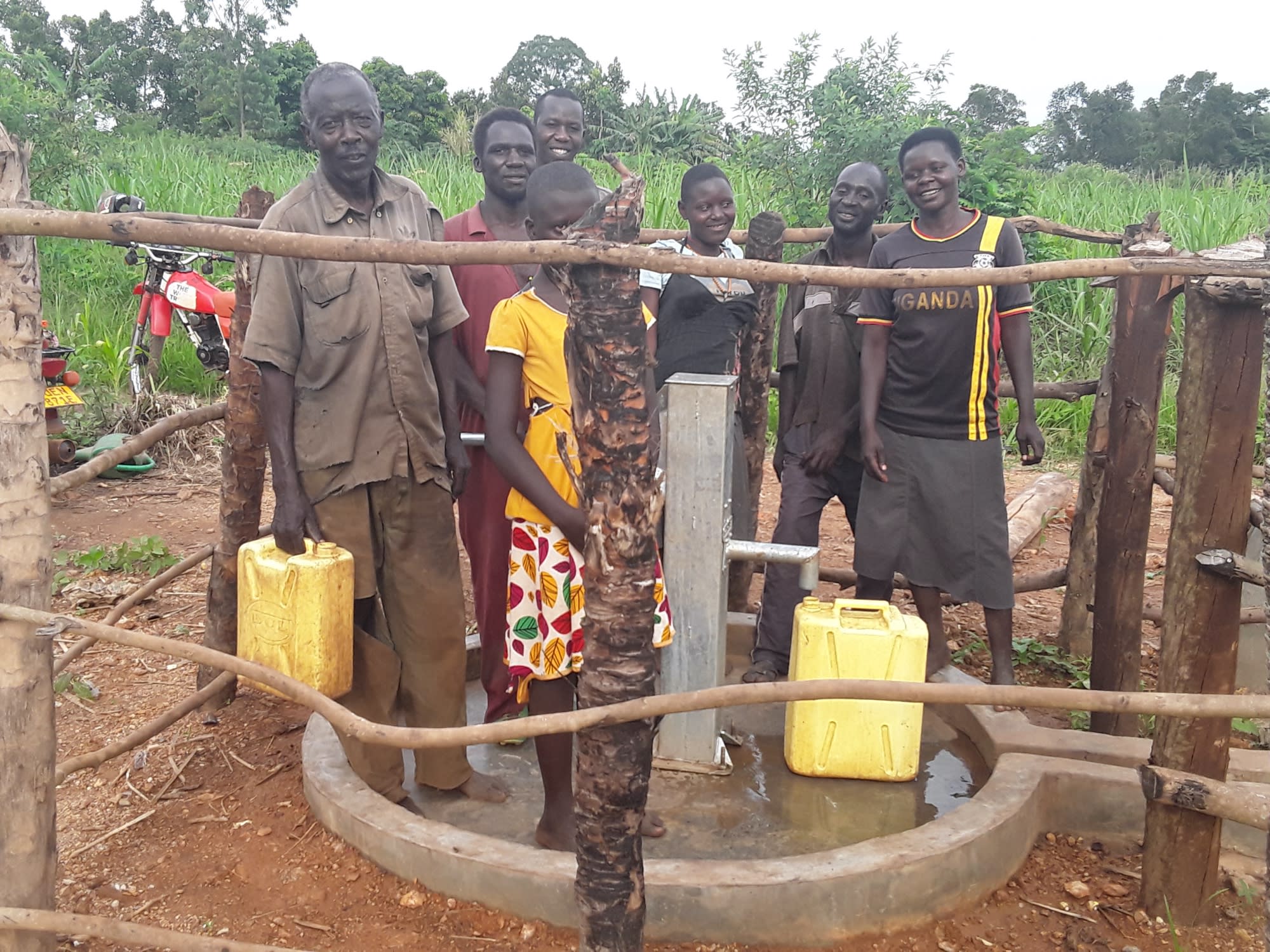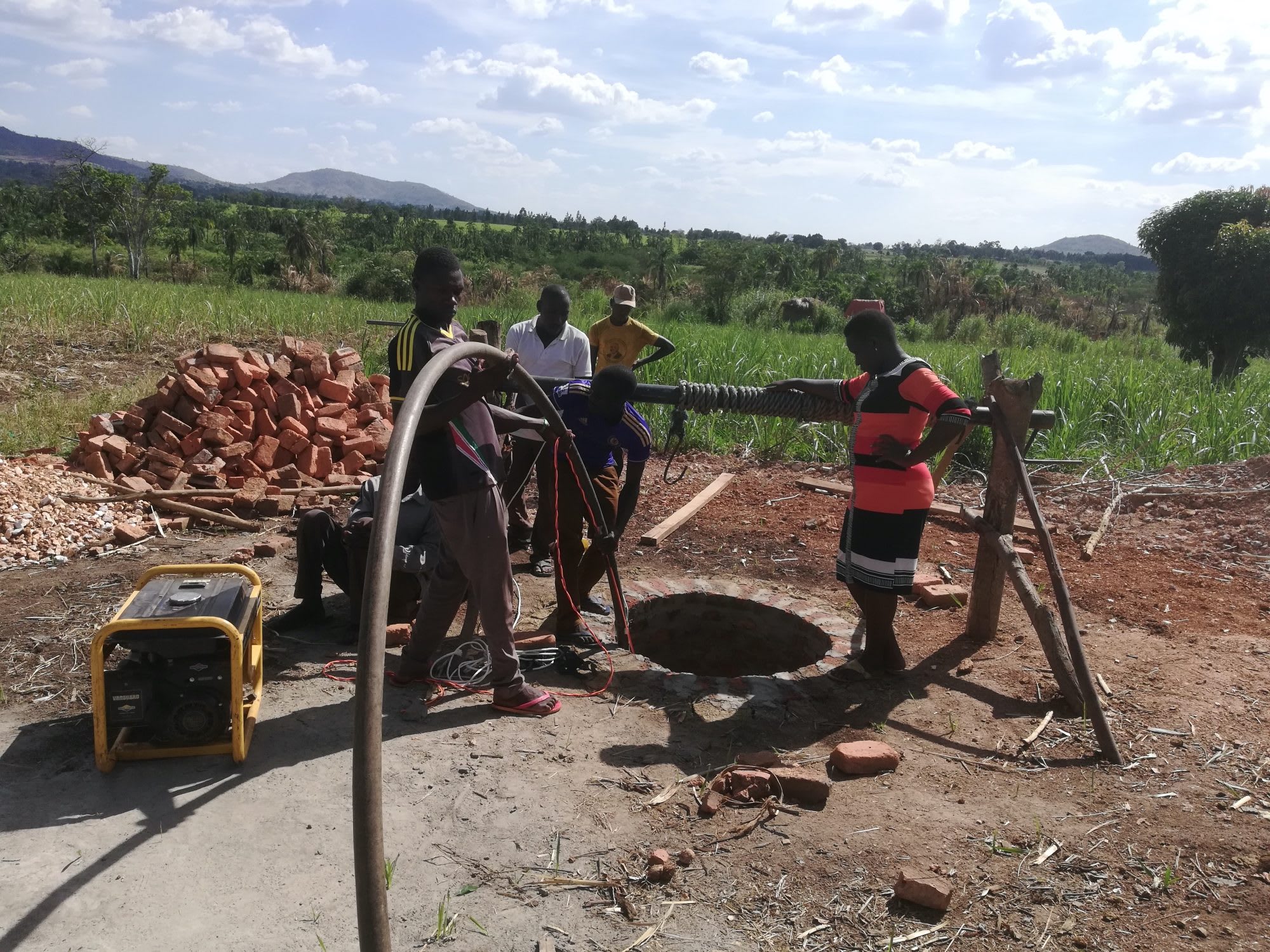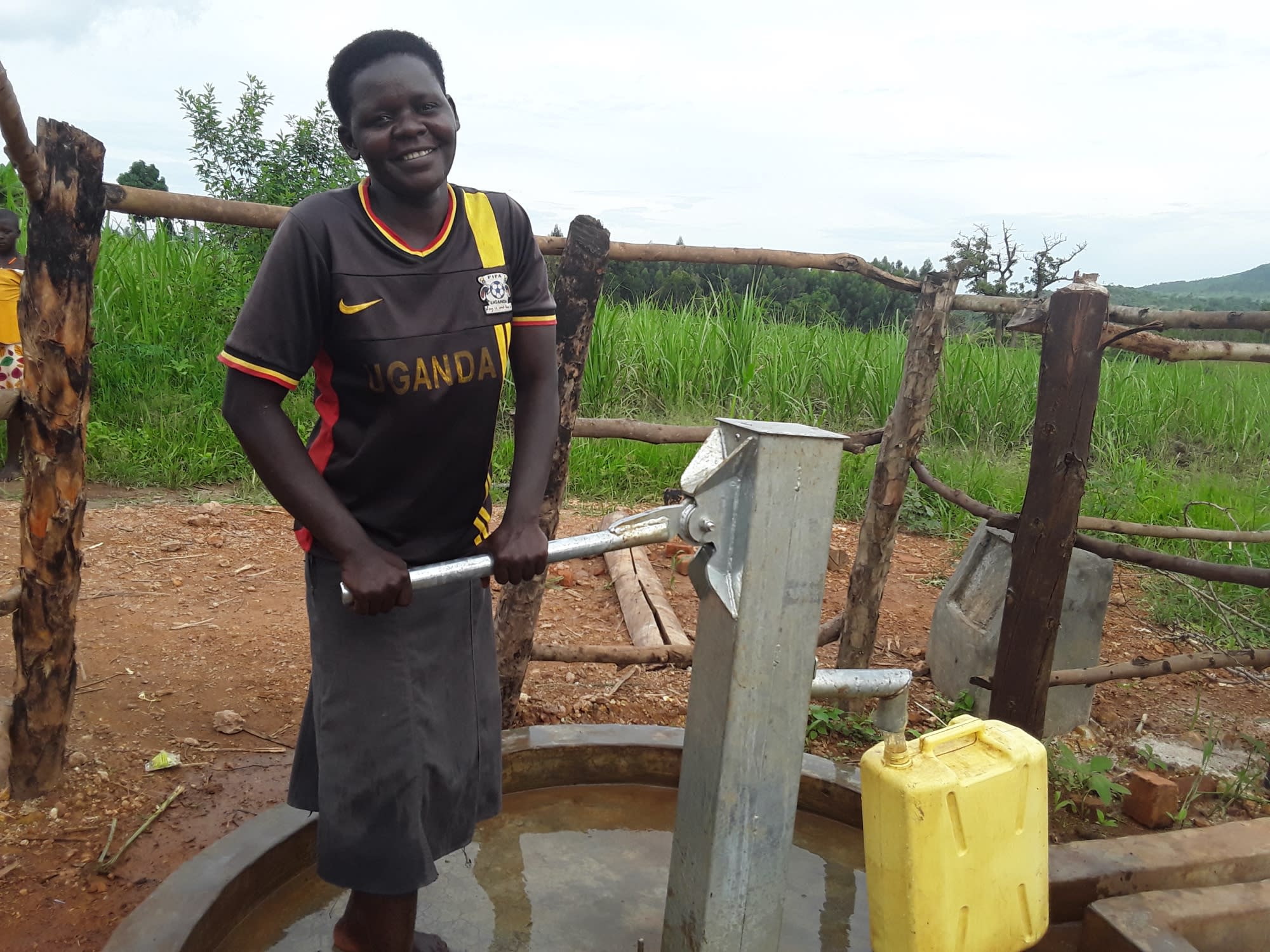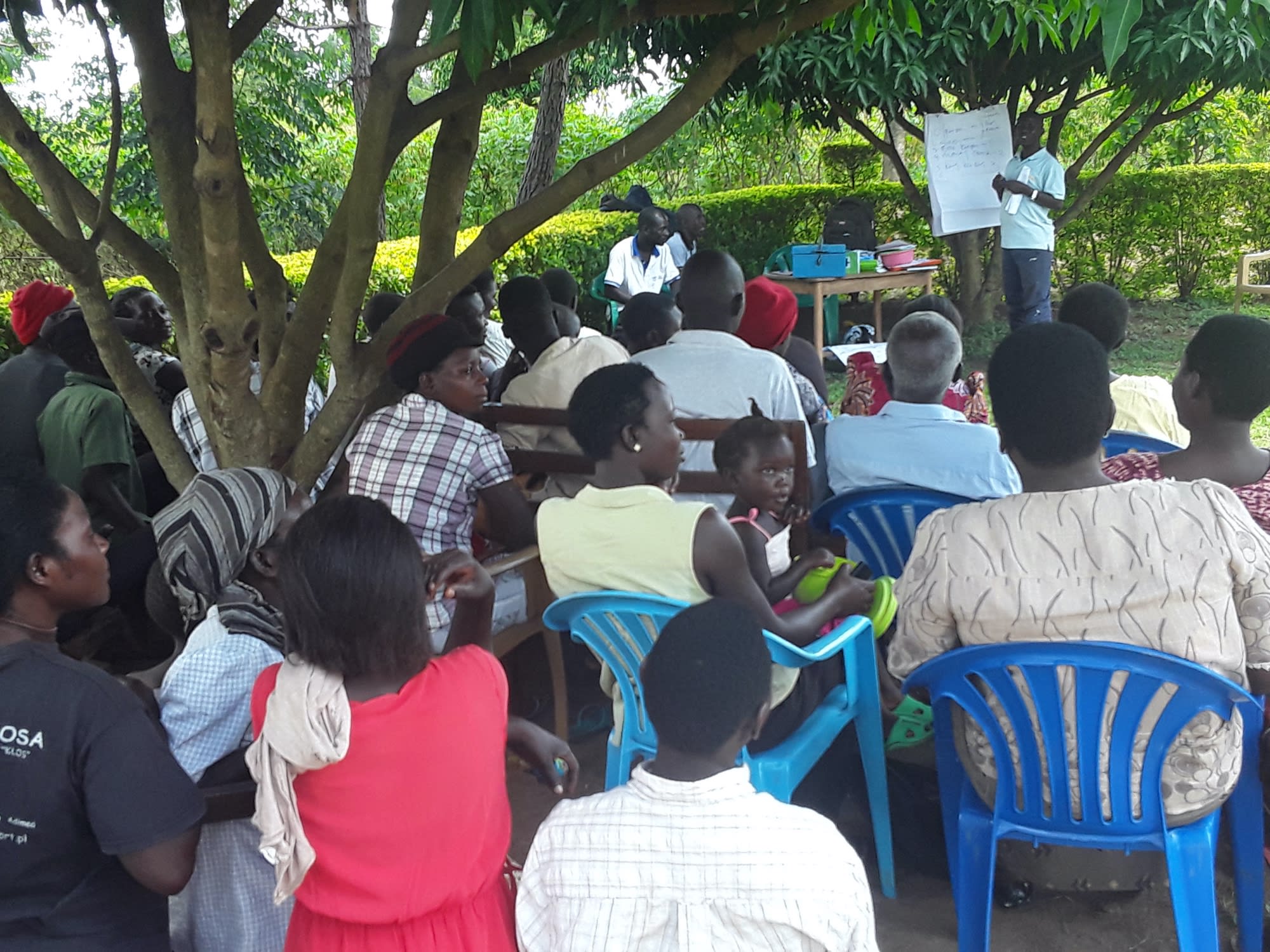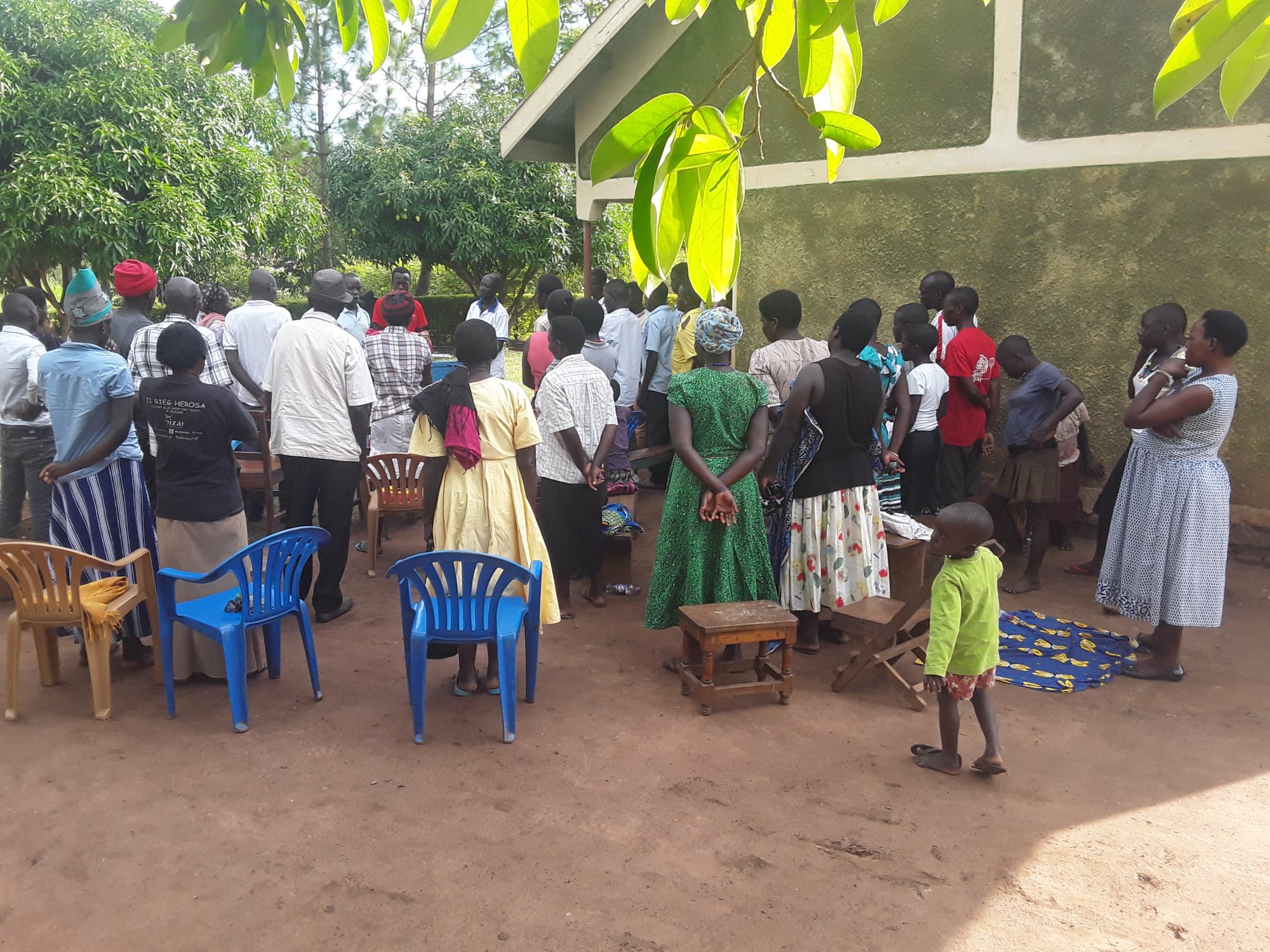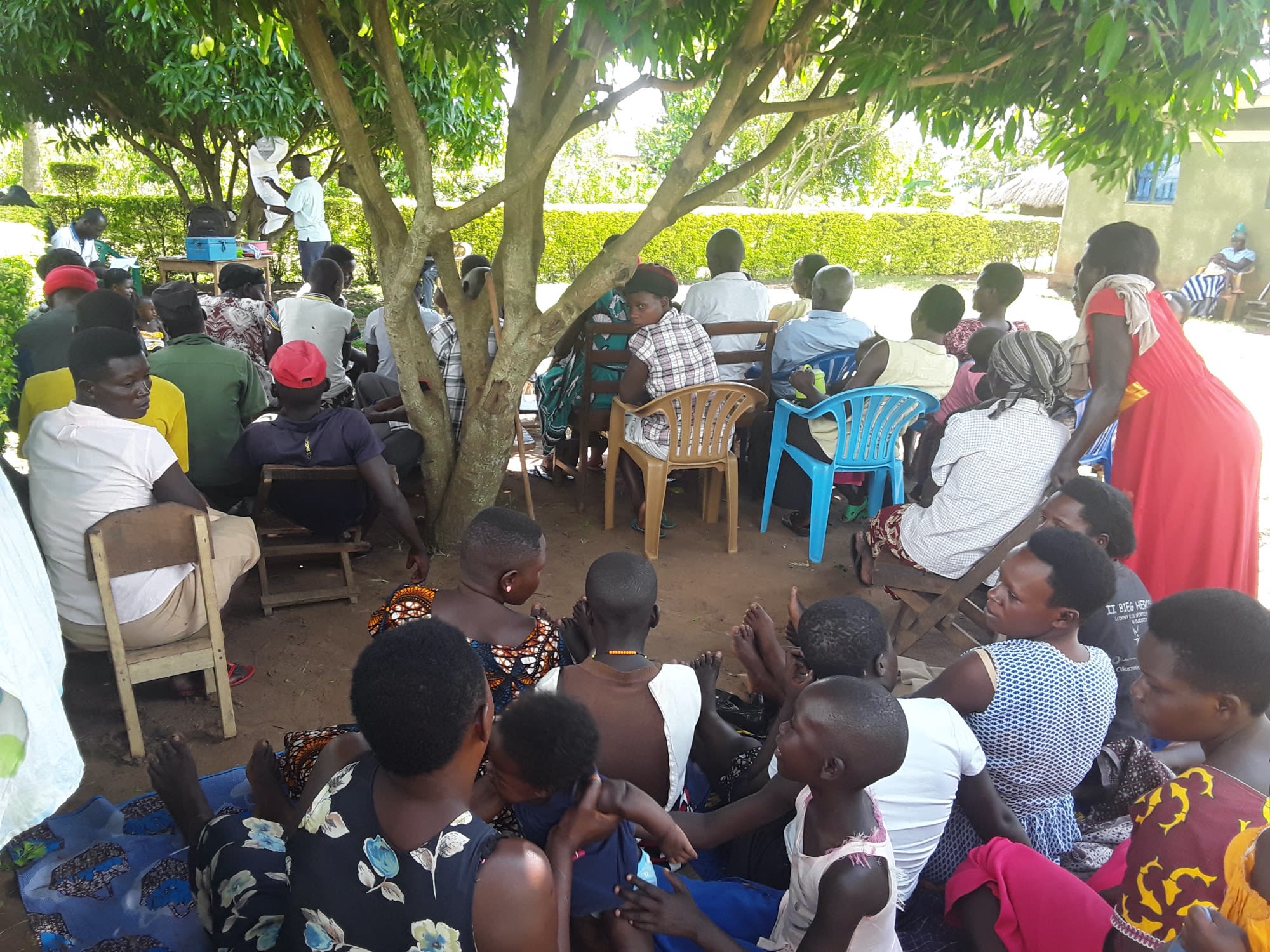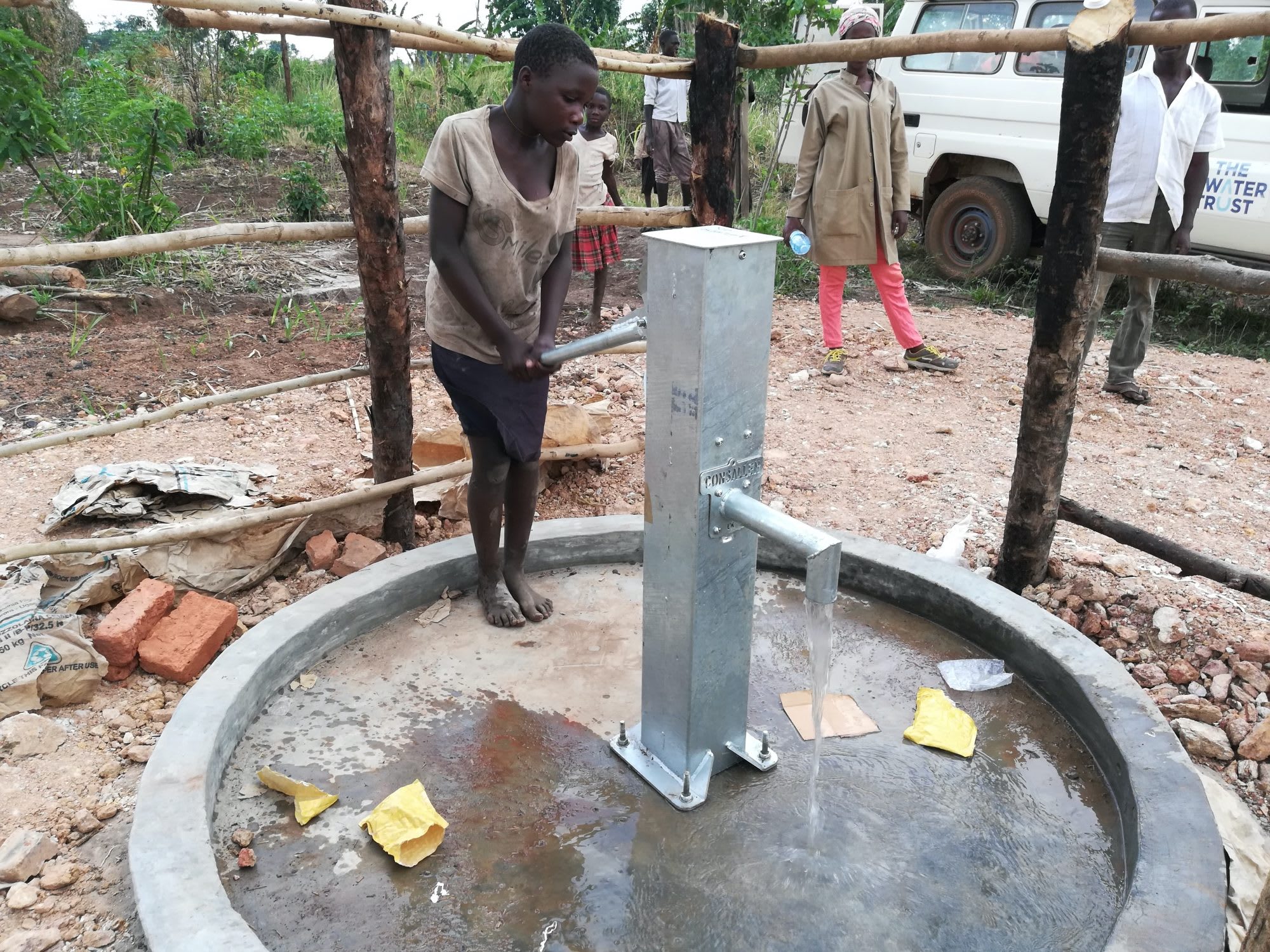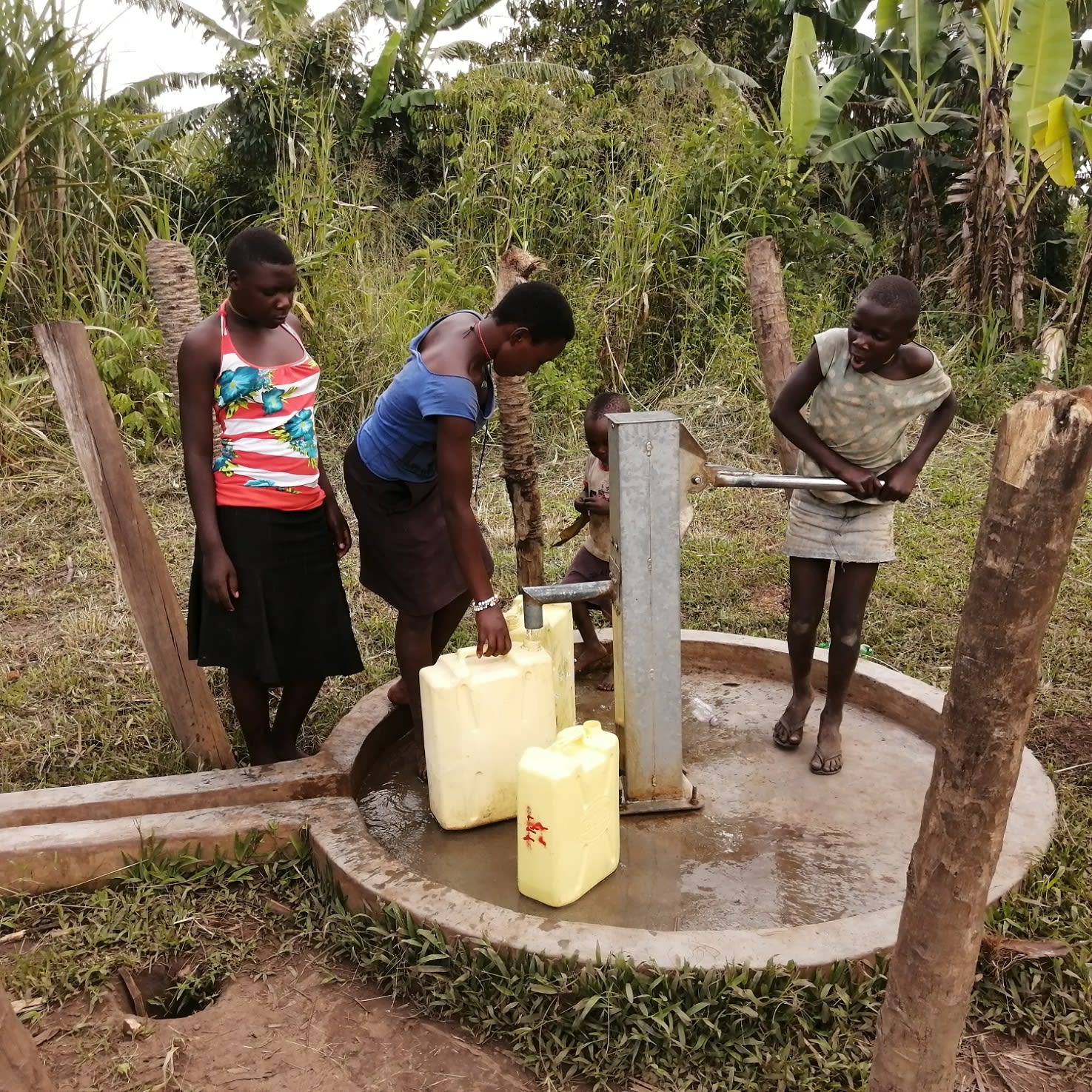Margaret Nabulia is a 35-year-old widow with 6 children living in Kimigi Kyamatama, Uganda. She is a peasant farmer growing beans, cassava, maize, and groundnuts. Margaret lost her husband in 2015, and since then two of her children dropped out of school because she could not afford school fees. Luckily three of her girls now go to a government school under Uganda's universal primary education scheme.

When Margaret's husband died, she decided to lease one hector of their family land to a sugarcane grower. Before her husband died, they had started building a two-bedroom house for their family in Kimigi Kyamatama. The landscape is gently sloping undulating valleys with expansive fragmented farmland. A typical household here has one or two huts made of grass thatched roofs and wattle wall.
Margaret and her children used to draw drinking water from a protected government borehole that took a 1-hour walking round trip. This borehole is now in the middle of a sugar cane plantation. A month ago, there were reports of strangers hiding in the sugar plantation stalking children who moved to collect water.
It is believed by Margaret that these strangers engage in child sacrifice rituals since they believe it is a source of wealth. Local Council Chairman Alituha Emmanuel expressed the same concerns as Margaret because he received reports the previous day that some strangers were identified in the neighborhoods allegedly stalking children traveling to school. As a result, Margaret and her children now fear walking to the government borehole.
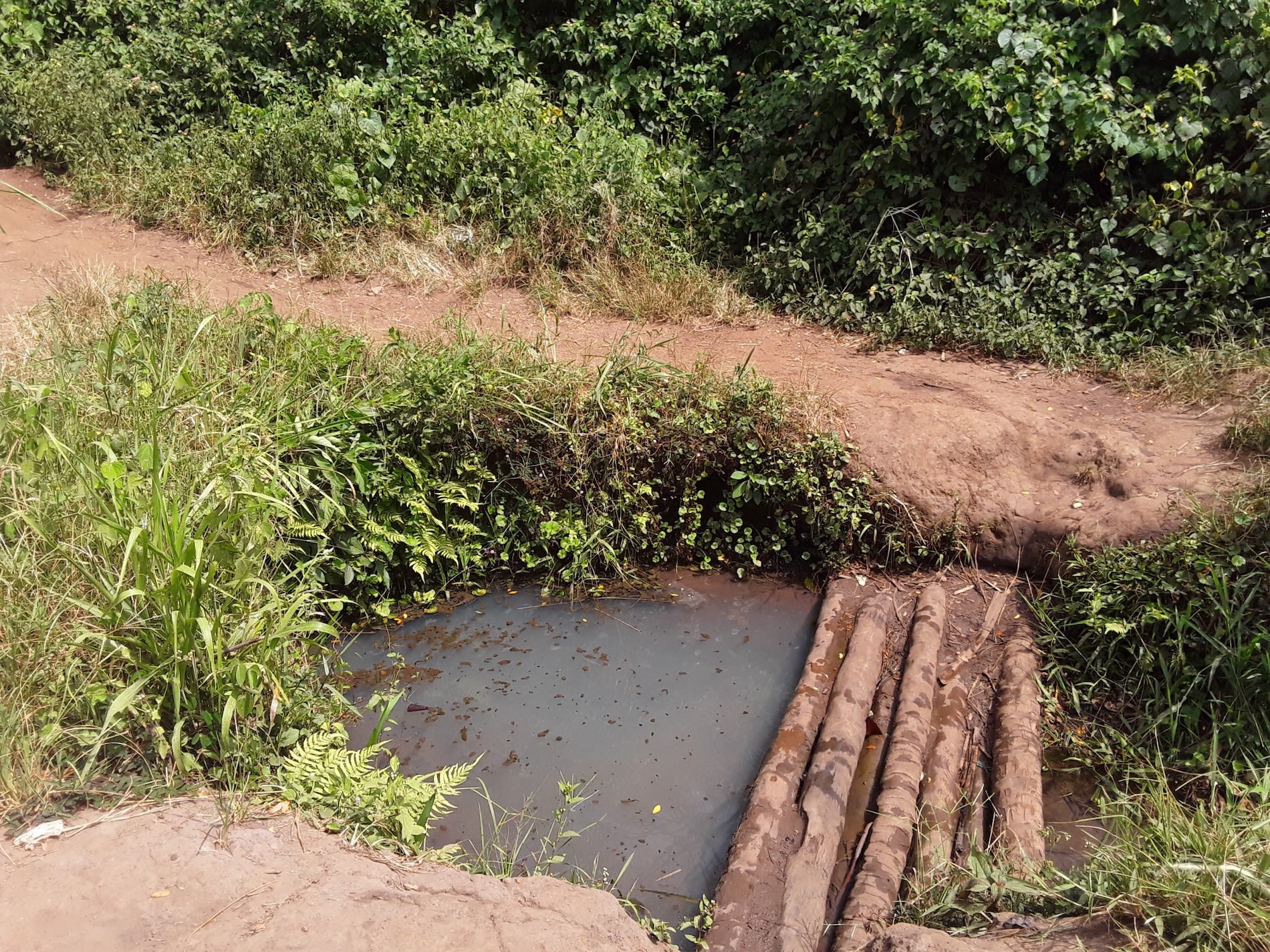
Margaret and her children turned to another borehole that is twice as far away to ensure their safety. They have to walk through two large swamps to access this water point. When it rains, the swamps flood and all pathways are blocked. At that point, the only water source at their disposal is an open source 20 minutes away from her home (pictured above).
When Margaret was asked about any sickness from this dirty water, she said, "My family suffered diarrhea since I opted for the open water source."
The story is similar for Mary Kahira, a 58-year-old peasant farmer from the community. Mary often worries about the security of her children in pursuit of clean and protected water source since the nearest borehole is through a sugarcane plantation.

"My children walk long distances for clean drinking water since the nearest water point is not protected," she said.
Due to the constraints of distance and security of her children, Mary at times draws water from the unprotected source. This has led to her children falling sick from diarrhea which has cost her money and time that she could have used for productive purposes.
But these stories will be pushed to the past with the construction of a new hand-dug well in the community. Mary and Margaret expressed optimism about their futures knowing that a new water point will arrive soon.
"I am hopeful that the ongoing construction of a safe water point would relieve the water condition of my family," said Margaret.
Here’s what we’re going to do about it:
New Hand-Dug Well
With the guidance of our artisans and mechanics, the excavated well will be cased, sealed with a well pad, and then finished with a new Consallen pump. The community will participate in excavating and constructing the water source.
Excavation takes a month or more on average, depending on the nature of the rock beneath. Construction of the well lining and installation of the pump takes on average 12 days.
This well will be located in Kimigi Community and will bring clean water closer to families having to walk long distances for their water.
Improved Sanitation
The aim is that all households own an improved latrine. Many households do not use a latrine but use the bush. Due to open defecation, feces are spread all over the village. This leads to waterborne diseases and contamination of groundwater and surface water. Our aim is that the community is able to live a healthy life free of preventable diseases. We endeavor that at the end of our presence in the community, people will have both access to sustainable, clean water and access to sanitation. We have now organized families to form digging groups for latrine construction, and empowered them with tools to use.
Training
Training’s main objectives are the use of latrines and observing proper hygiene practices since these goals are inherently connected to the provision of clean water. Open defecation, water storage in unclean containers and the absence of handwashing are all possible contaminants of a household water supply. Each participating village must achieve Open Defecation Free status (defined by one latrine per household), prior to the pump installation for a shallow hand-dug well.
This social program includes the assignment of one Community Development Officer (CDO) to each village. The CDO encourages each household to build an ideal homestead that includes: a latrine, handwashing facility, a separate structure for animals, rubbish pit and drying rack for dishes.
We also implement the Community Led Total Sanitation (CLTS) approach with each of our village partners. This aims to improve the sanitation and hygiene practices and behaviors of a village. During these sessions, village leaders naturally emerge and push the community to realize that the current practices of individual households – particularly the practice of open defecation– are not only unhealthy but affect the entire village. CLTS facilitates a process in which community members realize the negative consequences of their current water, sanitation and hygiene behaviors and are inspired to take action. Group interactions are frequent motivators for individual households to build latrines, use the latrines and demand that other households do the same.

 Protected Dug Well
Protected Dug Well
 Rehabilitation Project
Rehabilitation Project










